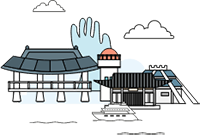
We recommend tourist destination that represents Jeju
We recommend tourist destination that represents Jeju
-
-
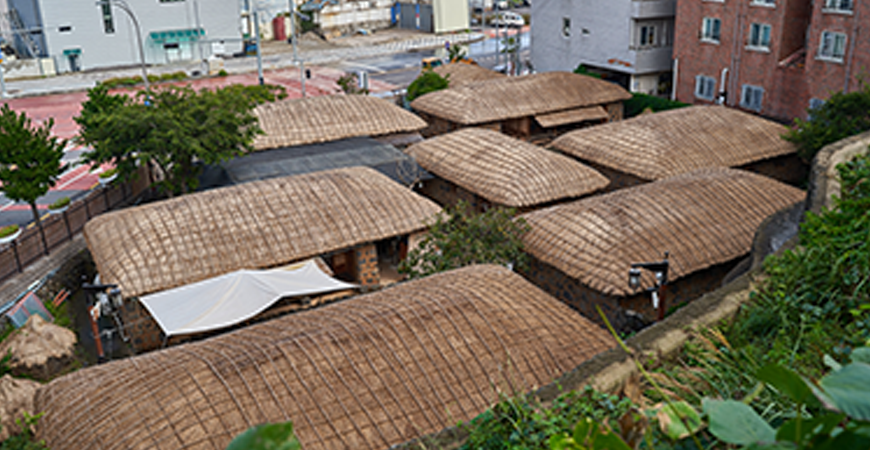 Kimmandeok Inn for Merchants Link to page
Kimmandeok Inn for Merchants Link to page
Kimmandeok Inn for Merchants is a small-scale folk village located at old downtown Jeju. Consisting of 8 thatched houses, there are observatory unit and experiential unit. On experiential unit, Kimmandeok bar is available with seafood pancake, rice soup, gulfweed soup and other traditional Jeju cuisine at an affordable price. Merchant inn was reproduced with a purpose of reviving history, promoting inheritance, revitalizing cultural tourism resources and ultimately contributing to the local economy. With the spirit of sharing and volunteering passing down from big merchant Kim Mandeok during late Joseon Dynasty, visitors and descendants are reminded of how social and economic responsibility and ethics can be upheld.
Photo by- From Jeju Port
- 0.9km 3min
- From Gangjeong Port
- 51km 66min
-
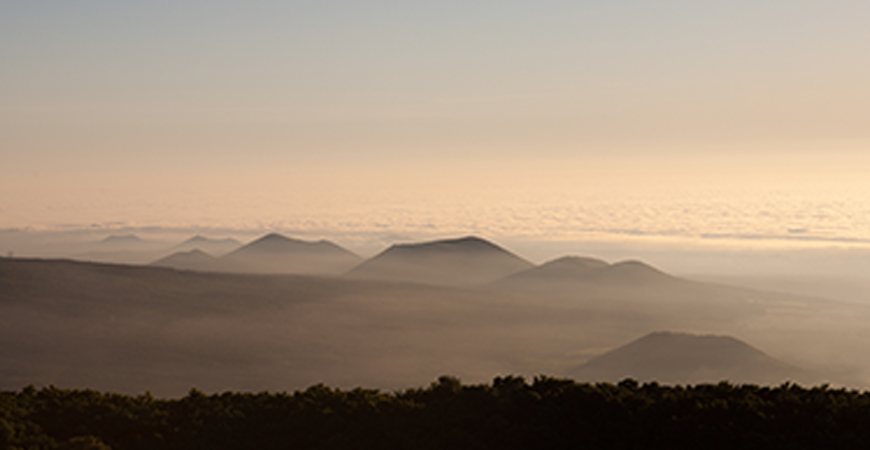 Eoseungsaengak at Hallasan Mountain Link to page
Eoseungsaengak at Hallasan Mountain Link to page
Eoseungsaengak, which has the biggest mountain body after Gunsan out of volcano of Jeju, is called as kid Hallasan. It takes about 30 minutes to reach Eoseungsaengak from Eorimok. On the top, you can have a bird’s eye view of downtown Jeju, Hallasan Mountain and the sea. Eoseungsaengak may be the best place of having a glimpse of Hallasan Mountain.
Photo by- From Jeju Port
- 22km 40min
- From Ganggeong Port
- 27km 40min
-
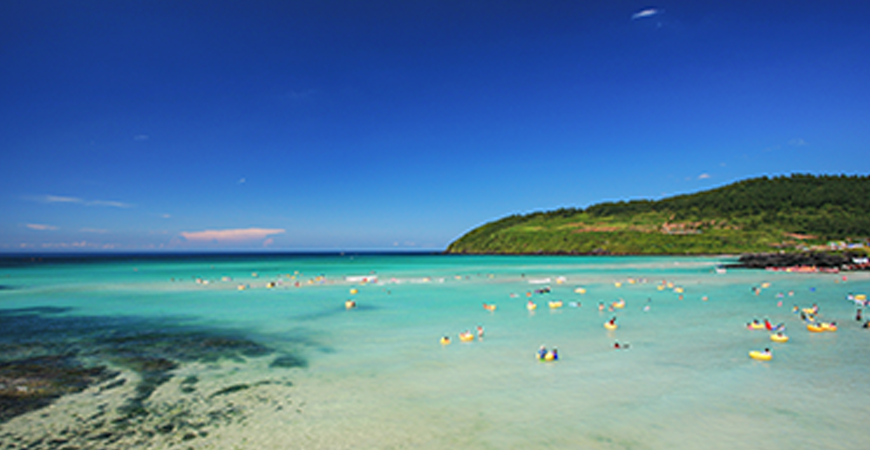 Hamdeok Beach Link to page
Hamdeok Beach Link to page
Out of many beaches at Jeju, Hamdeok Beach has one of the most colorful sea. Palm trees at the entrance and emerald-colored sea in contast with white sand give exotic atmosphere. Crystal clear water and shallow water attract family visitors for summer vacation. Picnic-worthy grass and trail path perfect for nighttime walk bring a steady stream of tourists across the year. On a special note, during summer nighttime opening encourages visitors to enjoy blue sea of Jeju.
Photo by (Lee Beonsu)-KTO- From Jeju Port
- 15.6km 25min
- From Gangjeong Port
- 67.8km 80min
-
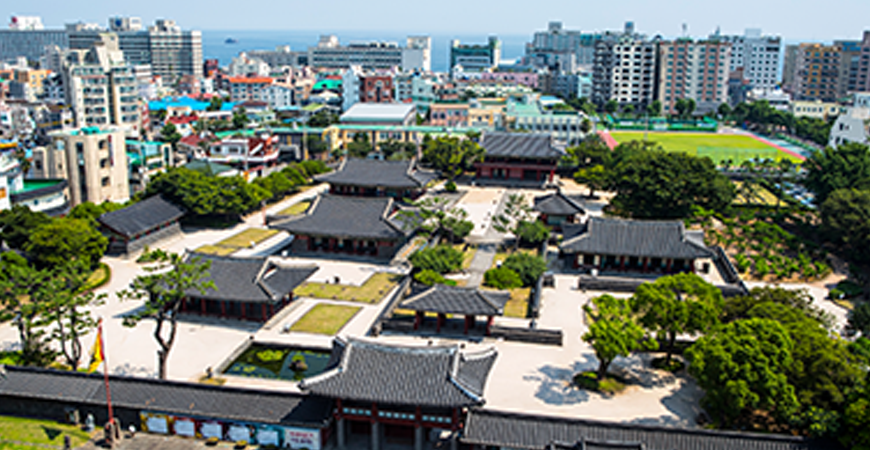 Gwandeokjeong PavilionLink to page
Gwandeokjeong PavilionLink to page
Gwandeokjeong Pavilion located at the center of Jeju downtown is one of the oldest structures in Jeju. The Pavilion was built for military drill among soldiers during Joseon. Gwandeokjeong is the representative pavilion of Jeju, remaining as a valuable relic for architecture history. Ridge pole inside and mural painted by unknown painter are highly evaluated as a great work of art. Please visit here if you want to access more tour information on Jeju
Photo by (Lee Beonsu)-KTO- From Jeju Port
- 1.6km 6min
- From Gangjeong Port
- 49km 80min
-
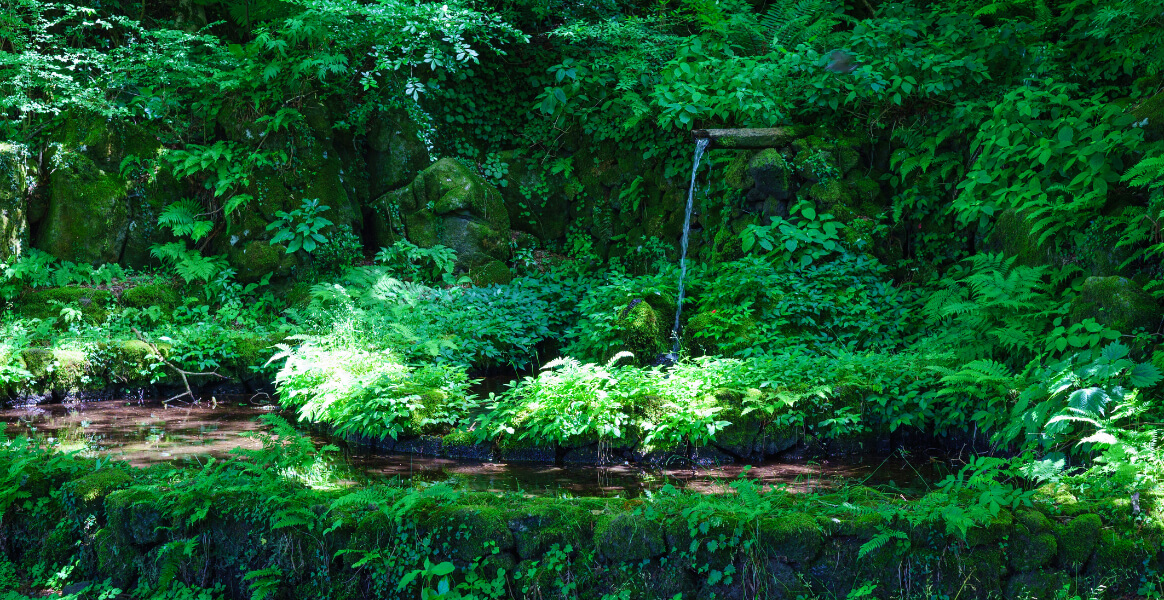 Jeolmul Natural Recreation ForestLink to page
Jeolmul Natural Recreation ForestLink to page
Jeolmul Natural Recreation Forest is located right under Jeolmul Oreum attracting visitors all year round with beautiful cedar forests, well established walking trail, cozy tree house, forest trail of longevity with virgin forests.
Photo by (Kim Jiho)-KTO- From Jeju Port
- 14 km 27 min
- From Gangjeong Port
- 46.3 km 66 min
-
 Eco Land Theme ParkLink to page
Eco Land Theme ParkLink to page
Eco Land Theme Park is where tourists take Lincoln Train, handmade from the UK modeled after Bald Win, a steam locomotive made in 1800s for touring about 1million square meters of Gotjawal. On 1million square meter Gotjawal, there are train rails and lake created for experiencing the nature and ecology, walks and picnic.
Photo by (Lee Beonsu)-KTO- From Jeju Port
- 18 km 30 min
- From Gangjeong Port
- 43.8 km 65 min
-
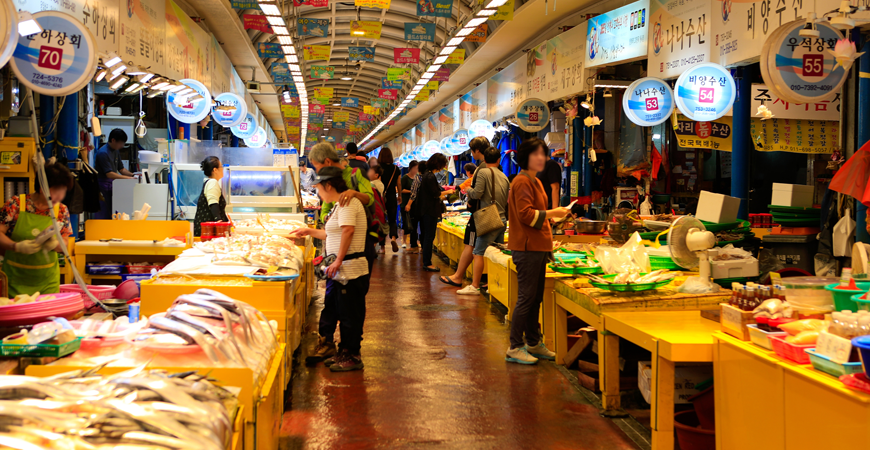 Jeju Dongmun Traditional MarketLink to page
Jeju Dongmun Traditional MarketLink to page
Jeju Dongmun Traditional Market is a time-honored traditional markets that represents Jeju. Along with Jeju Dongmun Traditional Seafood Market, Jeju Dongmun Traditional Market is the most pivotal and one of the largest year-round traditional markets.
Photo by (Kim Jiho)-KTO- From Jeju Port
- 2.5 km 8 min
- From Gangjeong Port
- 51.3 km 84 min
-
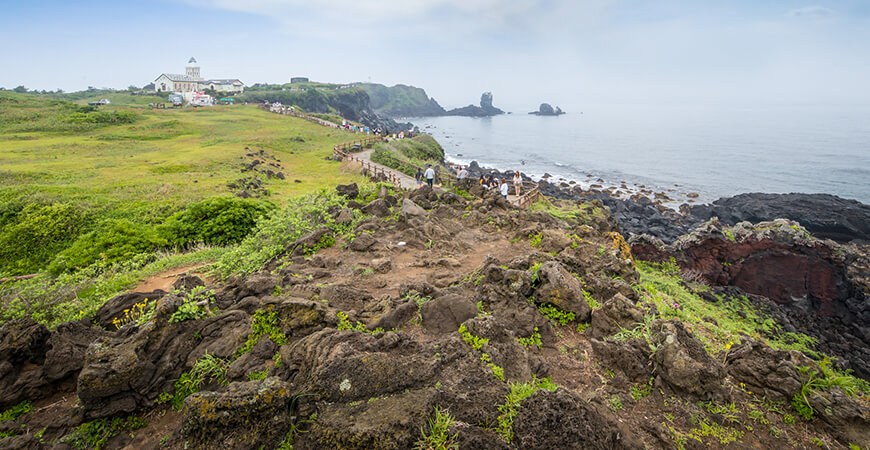 SeopjikojiLink to page
SeopjikojiLink to page
Seopjikoji is a protruded area on the east sea of Jeju. Marine view against the backdrop of Seongsan Ilchulbong is spectacular. You can meet signature Jeju scenery with Sinyang Beach at Deulmeoli, rape blossom land on hilly plain, Jeju pony enjoying grass-eating, sea cliff surrounded by rocks and high-towering legendary Seonbawi. Notably, unlike other coastal areas of Jeju, Seopjikoji is made up of red volcanic ashes called song-yi. Magnificently unique rocks that emerge and submerge depending on tidal wave bring rock exhibition of the nature to you.
Photo by (Kim Jiho)-KTO- From Jeju Port
- 45 km 60 min
- From Gangjeong Port
- 56 km 80 min
-
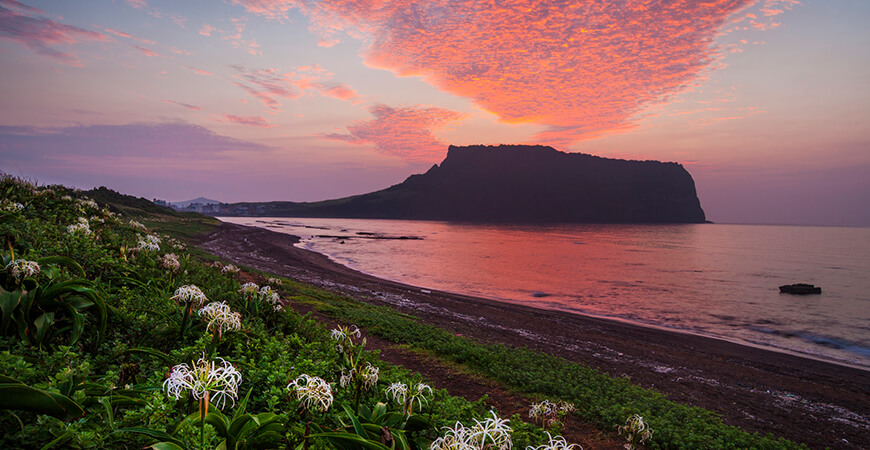 Seongsan Ilchulbong Tuff ConeLink to page
Seongsan Ilchulbong Tuff ConeLink to page
Seongsan Ilchulbong is a hydro-magmatic volcano in which magma erupted in the water. Hot magma that erupted during volcanic activity met cold sea water, making volcanic ashes wet and sticky. Such sticky layers piled up and made Seongsan Ilchulbong of today. When it was created, Seongsan Ilchulbong was far away from the main island. However, as sand and pebble piled up nearby, a path connected to the mainland emerged during the ebb tide. In 1940, the road was established and now Seongsan Ilchulbong is seamlessly linked to the land.
Photo by (Lim Seongbok)-KTO- From Jeju Port
- 42.8 km 60 min
- From Gangjeong Port
- 58 km 80 min
-
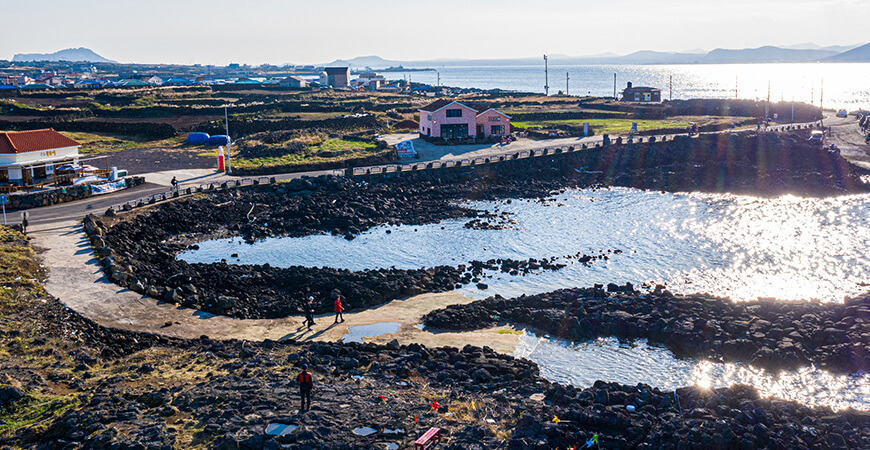 Udo IslandLink to page
Udo IslandLink to page
Udo resembles how cows lie down, so the island used to be called cow island and Shei island. Modest slope, fertile land, abundant fisheries, Udo eight signature scenery make Udo the ultimate destination for tourists, bringing 2 million visitors a year as a representative sub-island of Jeju Island.
Photo by (Kim Jiho)-KTO- From Jeju Port
- 50.2 km 90 min
- From Gangjeong Port
- 62 km 90 min
-
-
-
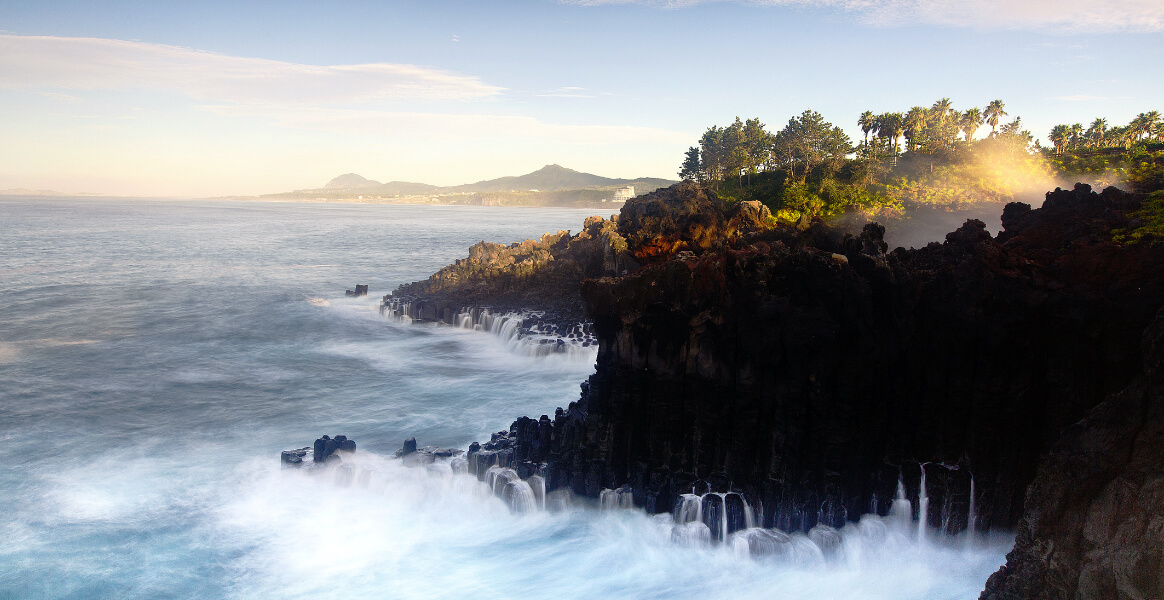 Jusangjeolli Cliff(Columnar Joint)Link to page
Jusangjeolli Cliff(Columnar Joint)Link to page
Jusangjeolli Cliff Dae is where blackish red hexagon-shaped stone columns that pile up in a sophisticated manner surround the sea located at the eastern sea side of Jungmun Tourism Complex. You can experience Jusangjeolli Cliff, pristine tourism resources which brings nature's greatness and subtlety altogether. It is designated as Jeju Cultural Heritage No.50
Photo by (Hwang Myeonghun)-KTO- From Jeju Por
- 46.2 km 71 min
- From Gangjeong Port
- 6.5 km 10 min
-
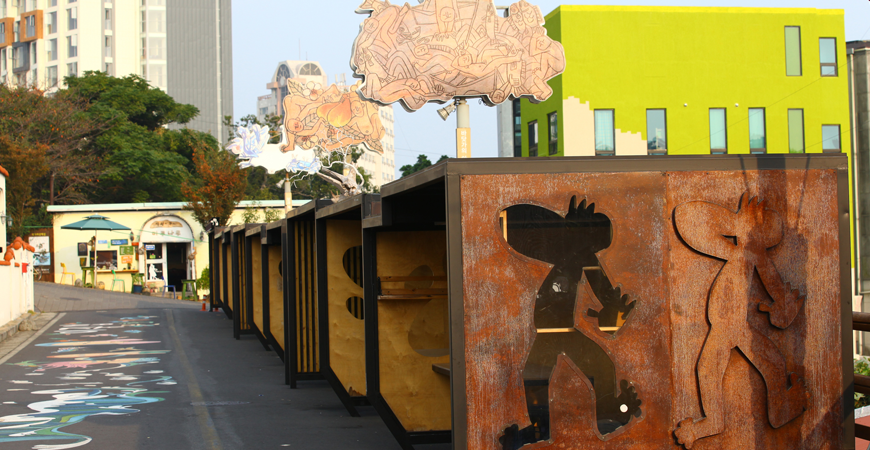 Lee Jungseop StreetLink to page
Lee Jungseop StreetLink to page
Lee Jung Seop Street is a street dedicated to genius painter Lee Jung Seop who integrated his passion for art into art works and passed away at the age of 40, centering around straw-roofed house where he used to stay while taking refuge.
Photo by (Lee Beonsu)-KTO- From Jeju Port
- 49.6 km 70 min
- From Gangjeong Port
- 9.5 km 21 min
-
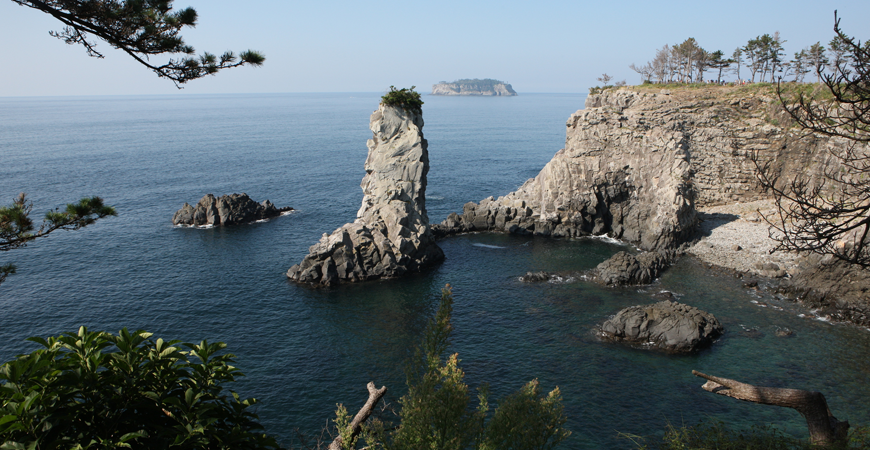 Oedolgae RockLink to page
Oedolgae RockLink to page
Oedolgae Rock was created about 1.5 million years ago when lava from volcano eruption changed the shape of the island. The name Oedolgae Rock came from standing alone away from the water and the area is also called 'Halmang Rock' with legend in which an old lady waited for her husband who took to the sea for fishing and turned into a rock.
Photo by (Kim Jiho)-KTO- From Jeju Port
- 52.1 km 74 min
- From Gangjeong Port
- 7.8 km 14 min
-
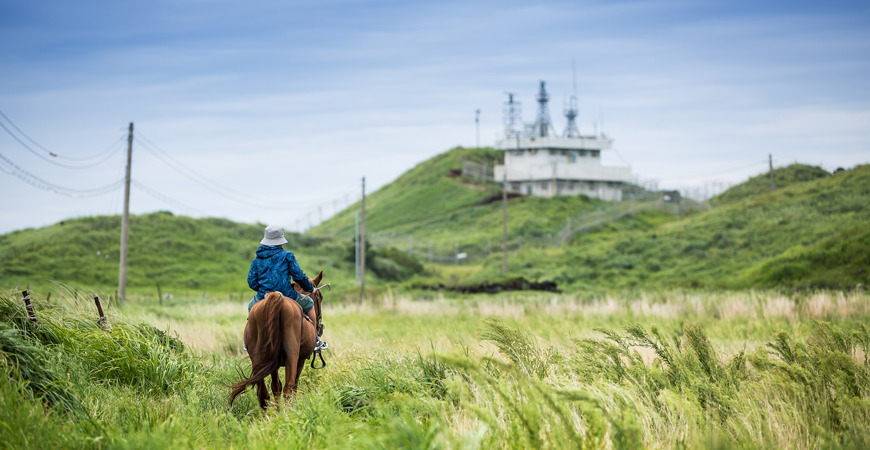 Songaksan MountainLink to page
Songaksan MountainLink to page
Sanbangsan is towering mountain in a sea shore that makes you feel like reaching out to Gapado Island. The area is called 99bong as it consists of 99 small mountain peaks. From Sanbanggulsa in southern Jeju to the entrance of Songaksan Mountain, you can enjoy driving against the backdrop of magnificent ocean view.
Photo by (Kim Juyeon)-KTO- From Jeju Port
- 48.5 km 73 min
- From Gangjeong Port
- 25.4 km 41 min
-
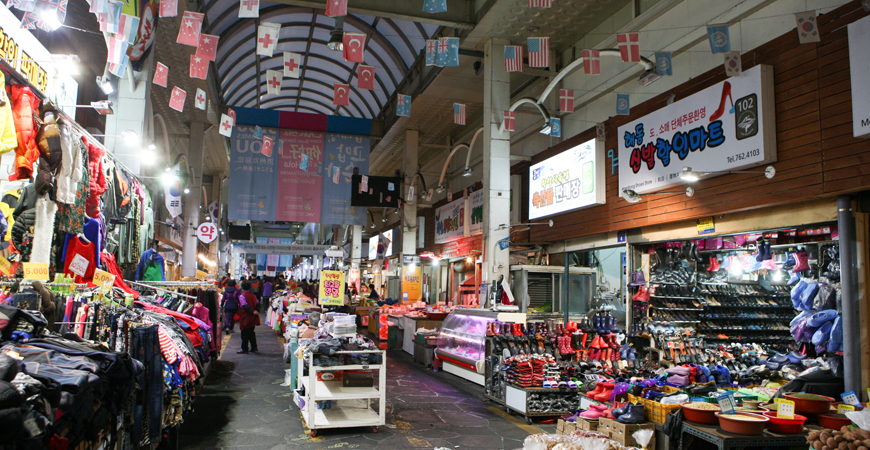 Maeil Olle MarketLink to page
Maeil Olle MarketLink to page
Seogquipo Maeil Olle Market is year-round traditional market with over 50 year of history. Maeil Olle Market is one of Jeju Olle 6 courses. Its original name Seogwipo Maeil Market was changed into Maeil Olle Market. With renovation, the market gained a renewed vitality.
Photo by (Kim Jiho)-KTO- From Jeju Port
- 50.2 km 75 min
- From Gangjeong Port
- 9.3 km 22 min
-
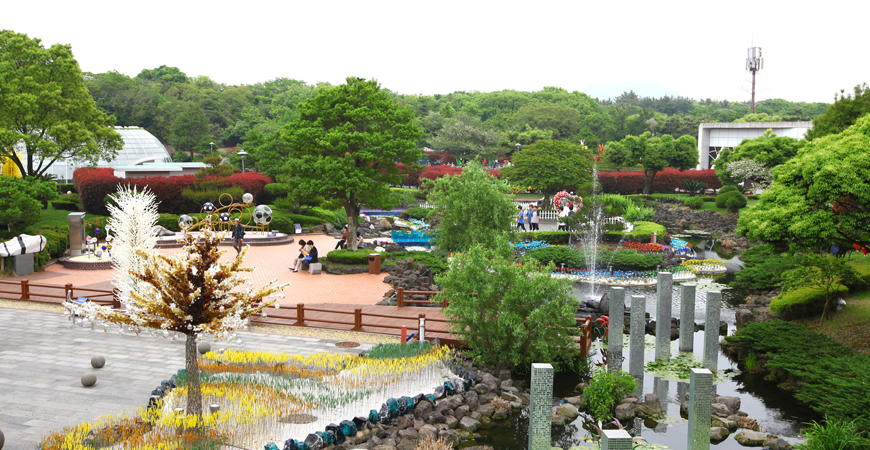 Glass CastleLink to page
Glass CastleLink to page
Jeju Glass Castle is the greatest glass-centric museum and theme park in Korea that opened in 2008 with glass art as a theme. Glass Castle was established as a multi-purpose glass theme park with cutting-edge architecture-based glass work experience hall, modern glass art indoor exhibition hall and glass dome-shaped coffee shop.
Photo by (Lee Beonsu)-KTO- From Jeju Port
- 39.7 km 60 min
- From Gangjeong Port
- 26 km 30 min
-
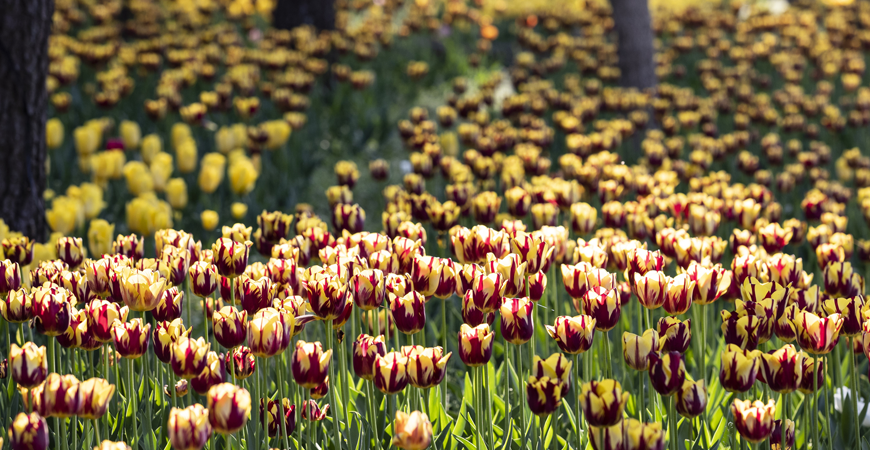 Hallim ParkLink to page
Hallim ParkLink to page
Hallim Park opened in 1971 where founder Song Bonggyu revitalized a wide land around Hallim. With 9 fantastic theme parks, Hallim Park is the signature tourist attraction where Jiang Zemin, former Chinese Premier and Nakasone, former Japanese Prime Minister paid a visit to the Park. Annually, over 1 million local and international visitors are enjoying the Park.
Photo by (Lee Beonsu)-KTO- From Jeju Port
- 36 km 70 min
- From Gangjeong Port
- 37 km 45 min
-
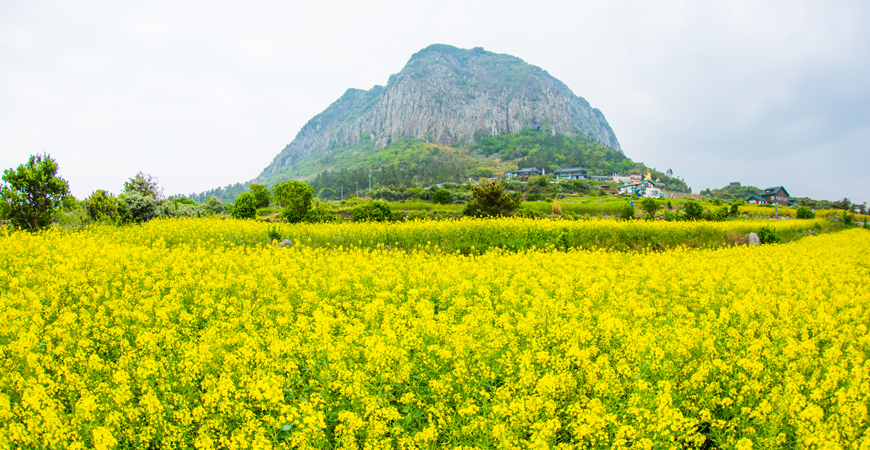 Sanbangsan MountainLink to page
Sanbangsan MountainLink to page
Sanbangsan Mountain is viewable from almost any place in southwestern Jeju for its huge size and the mountain is particularly eye-catching as it stands tall alone in the flat region. Sanbang means a mountain with cave. In a small cave under Sanbang Mountain, Buddha is honored and this place is called 'Sanbanggulsa'. Raindrops are falling any day regardless of the weather condition and this raindrop is called the tear drop of 'Sanbangdeok' a goddess of Sanbangsan Mountain. You can find peace of mind and calmness with wide sea, beautiful and majestic green nature within Sanbangsan Mountain.
Photo by (Live Studio)-KTO- From Jeju Port
- 43 km 70 min
- From Gangjeong Port
- 21 km 30 min
-
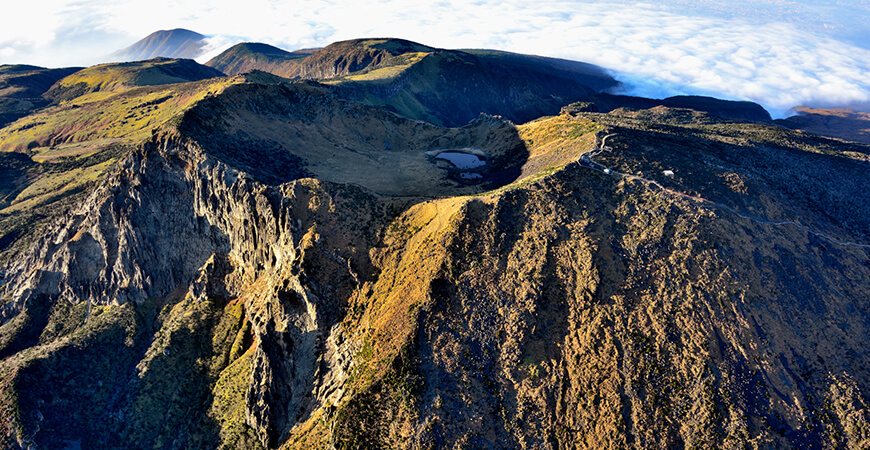 Hallasan National ParkLink to page
Hallasan National ParkLink to page
Along with Jirisan Mountain and Geumgangsan Mountain of North Korea, Hallasan belongs to three major spiritual mountains, located at the southern tip of the Korean Peninsula with 1,950m in height above sea level. Various vegetation renders a high academic value of the mountain. As a repository of animals and plants, Hallasan was designated as Natural Memorial No.182 on Oct 12 of 1966 and nature protection zone. On Mar 24 of 1970, Hallasan was designated as national park. In December 2002, Hallasan was designated as UNESCO Biosphere Reserve.
Photo by (IR Studio)-KTO- From Jeju Port
- 24.2 km 40 min
- From Gangjeong Port
- 20 km 30 min
-
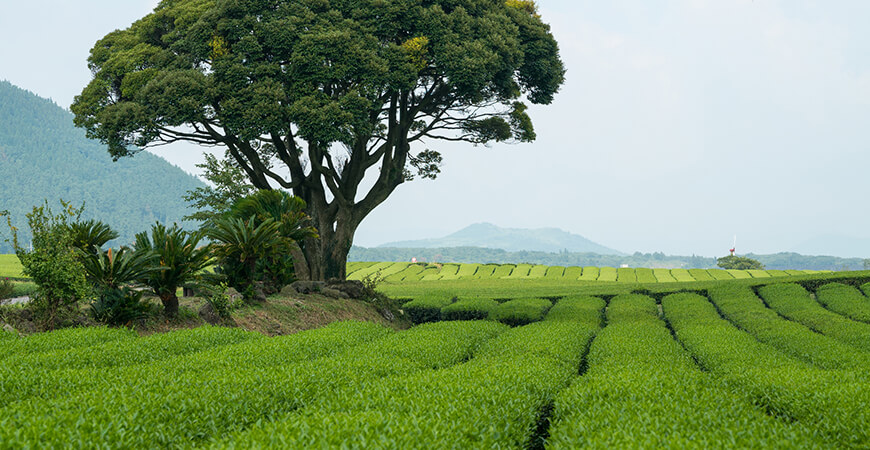 OSULLOC Tea MuesumLink to page
OSULLOC Tea MuesumLink to page
OSULLOC Tea Muesum opened in September 2001 exhibiting local and international tea-related items. The Museum is located at the entrance of Seogwang Tea Garden on green tea field. The east and the west strike the right balance, creating the space for enjoying culture and eco-friendly leisure. The whole building is shaped after green tea cup. As a place for learning green tea and traditional Korean tea culture, tourists can build an experience of what SULLOC Tea is all about.
Photo by (Kim Jiho)-KTO- From Jeju Port
- 38.1 km 60 min
- From Gangjeong Port
- 25 km 30 min
-
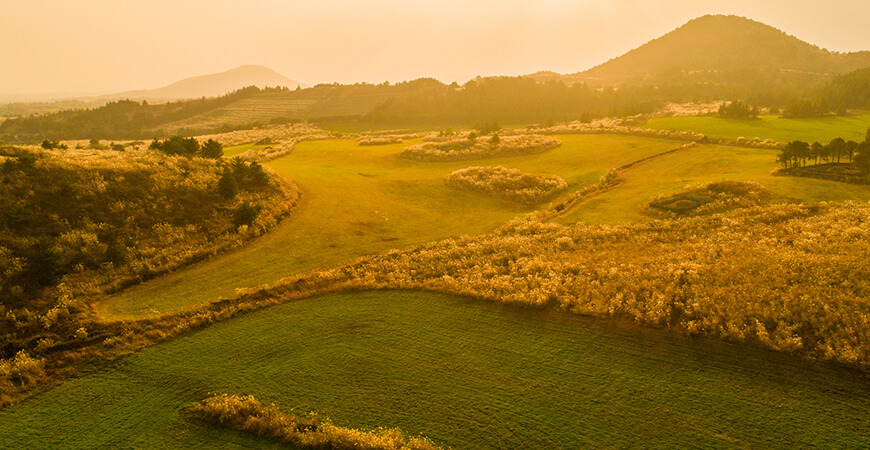 Saebyeol OreumLink to page
Saebyeol OreumLink to page
Saebyeol Oreum is the most representative oreum in western Jeju out of oreum areas in Jungsangan where Barime Oreum, Nuun Oreum, Dang Oreum and Geum Oreum are located. Its name Saebyeol comes from standing like Venus alone in the night time. With an amazing landscape, Seongyi Sidol Ranch and Wangdda Tree attract a number of tourists.
Photo by (Live Studio)-KTO- From Jeju Port
- 27 km 50 min
- From Gangjeong Port
- 26 km 30 min
-





